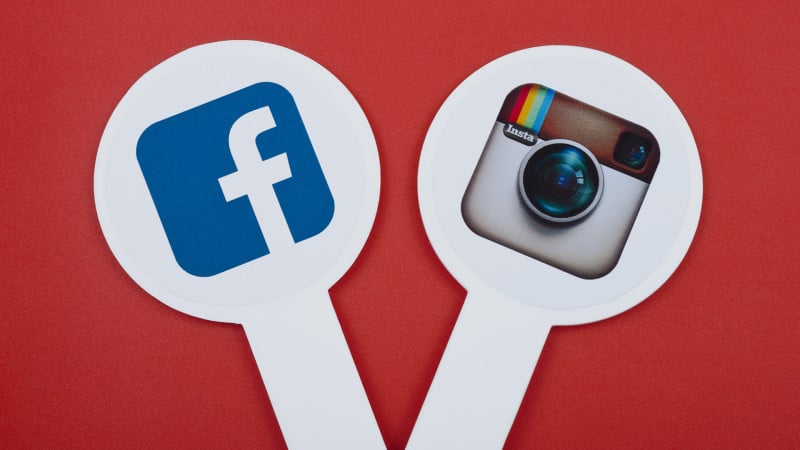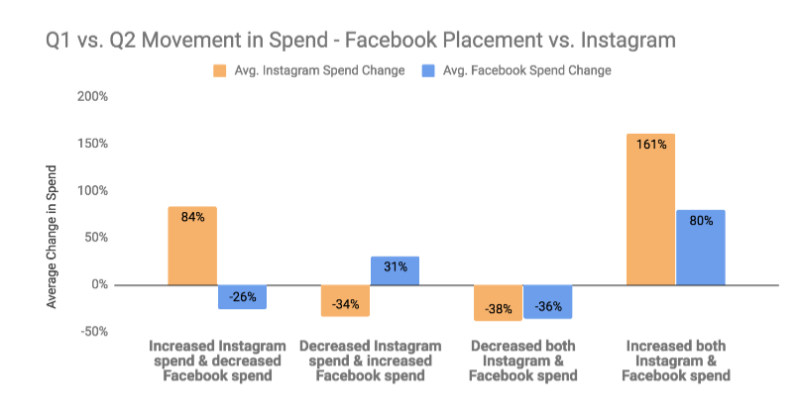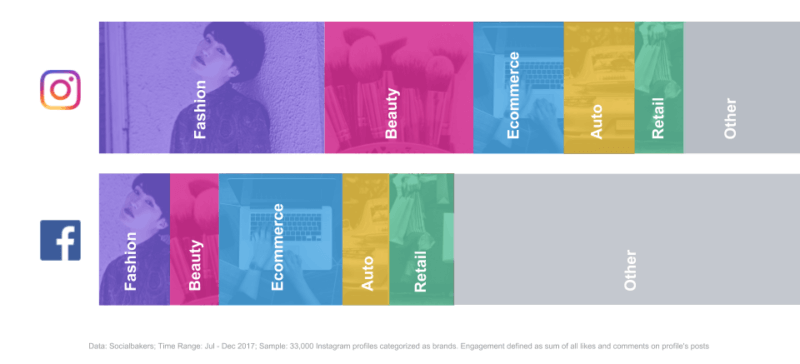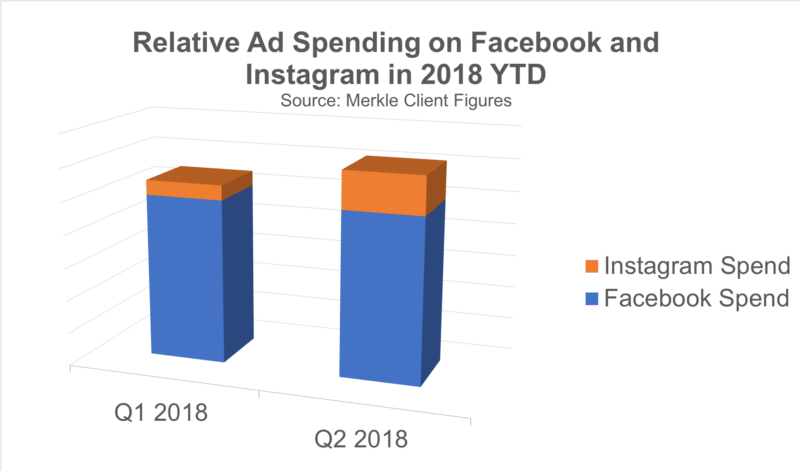
tanuha2001 / Shutterstock.com
Facebook suffered a lackluster Q2, reporting slow user growth and lower-than-expected revenue. The company’s poor performance resulted in the biggest one-day dive in American stock market history, with Facebook stock falling 19 percent, costing the company $120 billion in a single day.
Facebook CFO David Wehner tried to smooth over the company’s lost revenue and slowed user growth during Facebook’s Q2 2018 earnings call, warning that the dismal results may continue as Facebook puts its focus on Stories and users continue to take advantage of new privacy controls.
“There are several factors contributing to that deceleration. For example, we expect currency to be a slight headwind in the second half versus the tailwinds we have experienced over the last several quarters,” said Wehner. “We plan to grow and promote certain engaging experiences like Stories that currently have lower levels of monetization. We are also giving people who use our services more choices around data privacy which may have an impact on our revenue.”
As Facebook hits a dry spell, Instagram — the less popular app that appeals to a younger demographic and offers fresher content — is proving to be the company’s bright spot in the short term.
Instagram CEO Kevin Systrom announced in June that the app had surpassed the billion user mark. And it’s not just user growth that’s moving in the right direction; Instagram is seeing a significant uptick in ad dollars coming to the platform from advertisers who have found greener pastures on Instagram over Facebook’s News Feed.
Advertisers are spending more on Instagram
Last month, Merkle reported ad spend on Instagram was growing at four times the rate of ad spend on Facebook ads — with Instagram ad spend up 177 percent year over year during Q2 compared to Facebook’s 40 percent increase. (Of course, Facebook is the more established property attracting higher spend overall, so it’s no surprise that Instagram’s growth curve is steeper.)
Meanwhile, among its clients, 4C saw an even higher rate of ad spend growth on Instagram — up 204 percent year over year. The only other social platform to beat Instagram’s growth per 4C’s data was LinkedIn, which saw a 212 percent jump in ad spend growth. Per 4C’s Q2 State of Digital Media report, ad spend growth on all other social platforms — Facebook, Twitter and Snapchat — was up less than 50 percent year over year, with Facebook seeing only a 26 percent increase among 4C clients.
Merkle and 4C are not the only companies reporting major upticks in ad spend growth rates on Instagram, which look especially promising compared to Facebook. In terms of the average change in ad spend from Q1 to Q2 of this year, AdStage saw a significant gap between Instagram and Facebook.
Looking at 137 Facebook client accounts that advertised on Facebook and Instagram every month from January to June 2018, AdStage reports a 31 percent increase in average ad spend for clients that upped their Facebook ad spend while decreasing their Instagram spend — but, for the companies that increased ad spend on Instagram and decreased on Facebook, there was an 84 percent jump in the average increase in spend on Instagram.
For the third group of companies that increased ad spend on both Instagram and Facebook, AdStage reports these clients upped their spend on Instagram in a much bigger way — on average, 161 percent on Instagram compared to, on average, 90 percent on Facebook.
AdStage Facebook placement spend vs Instagram spend

“We see advertisers reaching high levels of efficiency with Facebook News Feed. Adding spend to these already optimized campaigns may only provide small improvements,” says AdStage product data analyst Josh Rodriguez. “Advertisers are finding that Instagram continues to provide increasing results and peak optimization that hasn’t been reached yet. In Q2, the median Instagram CTRs increased 19 percent, while the median CPC decreased three percent.”
According to Rodriguez, AdStage saw Facebook CPMs increase for three quarters in a row — between Q3 2017 and Q1 2018 — before they dropped 12 percent during Q2 of this year.
“This could be a market correction, a result of advertisers pulling back spend (budget optimization) or shifting spend to Instagram,” says Rodriguez.
What’s driving Instagram’s growth?
AdStage vice president of product, Paul Wicker, says Instagram’s commitment to building out its ad platform is delivering more brands and marketers to the app.
“The pace of innovation by the Instagram team has been fierce. Over the past year, we’ve seen Instagram roll out numerous improvements to the core Instagram experience as well as Instagram Stories. Facebook recently announced that there are more than one billion Instagram users, and advertisers are drooling over all that inventory. Based on what we’re hearing from our customers and seeing in the data, we expect Instagram inventory to continue to grow through the rest of 2018,” says Wicker.
Brian Handly, the CEO of Reveal Mobile, attributes Instagram’s ad growth to its audience demographics and to a lack of controversial content on the platform. His company, a location-based marketing platform, recently surveyed more than 200 SMB owners in the US and found that, among the companies who said they used Instagram advertising (which was a surprisingly small group at only 34.6 percent of the survey respondents), 50 percent who did advertise on the platform said it was the highest priority for their business.
“The trend to utilize budgets to build campaigns on Instagram has increased over the last 12 to 18 months,” says Handly, “This is driven by advertisers’ desire to reach a larger, younger audience with Instagram’s growing popularity and to find alternative solutions to avoid the negativity that can sometimes accompany posts and campaigns on Facebook.”
Instagram’s one billion users are engaged
Handly believes Instagram users are more receptive to advertising and less likely to respond negatively to campaigns. At one billion monthly active users (MAUs), Instagram’s base is less than half the size of Facebook’s 2.23 billion MAUs, but its crowd is an engaged group.
Socialbakers, a social media management platform, found evidence supporting Handly’s take on user engagement. According to its data, Instagram-branded profiles are generating higher rates of user engagement compared to those on Facebook — especially in the fashion and beauty verticals.
Total user engagement on branded profiles across verticals

Socialbakers also saw ad growth on Instagram. According to its data, Facebook ad accounts placing ads on Instagram grew from approximately 10 percent in February of 2017 to 40 percent in April of this year.
And let’s not forget about Story Ads
Launched just over a year and a half ago, Instagram’s Story ads have proven to be one of the company’s more popular ad units.
Smartly.io, an online advertising platform, has seen a dramatic increase in the number of ad dollars its clients are investing in Instagram Story ads compared to their overall Instagram ad budget. In May 2017, Instagram Story ad budget represented 1.18 percent of overall Instagram ad spend for Smartly.io clients; that number jumped to 17.05 percent in May of this year.
One of Smartly.io’s clients, Hopper, a travel planning app, shifted 50 percent of its Instagram ad budget to Story ads at the end of 2017.
“It happened when we realized installs were cheaper on Instagram Stories, but also that users coming from that placement were converting almost three times better than users coming from the Facebook News Feed,” says Hopper’s head of user acquisition, Simon Lejeune.
Hopper’s Instagram Story ads yielded a 67 percent higher rate of app installs compared to other channels and a lower cost per impressions (CPM) when compared to Instagram News Feed ads and Facebook News Feed ads: CPM for Instagram Story ads was $6.25 compared to Instagram Feed ads at $6.96 and Facebook News Feed ads at $6.42.
Lejeune attributes the success of Hopper’s Story ad campaigns to there being a “ton” of volume available on Instagram while other advertisers were not as quick to take advantage of the ad unit.
Jose Sanchez, the head of Smartly.io’s creative studio, says marketers are drawn to the mobile-first and full-screen ad format Stories offer.
“It is a flexible way to do memorable, engaging and fun brand and direct response advertising,” says Sanchez.
Can Instagram hold its growth pattern?
It’s not a complete shock to see Instagram’s ad spend growing at a faster rate than Facebook’s, since Facebook has a more mature ad platform with less room for growth. What is interesting is the share of Facebook ad dollars that have been shifting to Instagram.
According to Merkle’s data on advertisers running both Facebook and Instagram campaigns, Instagram grabbed a much bigger portion of the ad-share pie in Q2 compared to Q1.
“Looking at the median advertiser active on both Facebook and Instagram, Instagram accounted for 23 percent as much spend as Facebook in Q2 2018, which is up meaningfully from the 9 percent relative spend observed in Q1 2018,” says Andy Taylor, Merkle’s associate director of research. “We don’t have relative spend figures to provide from further back than Q1, but it’s safe to assume that the figure has been growing over the past year and that we expect Instagram growth to continue to outpace that of Facebook proper.”

When asked if the ad spend shift to Instagram by the industry as a whole is connected to ad saturation within Facebook’s News Feed, Sanchez said he doesn’t think so.
“It’s more about adoption,” says Sanchez. “[Facebook’s] News Feed has been around for much longer; adopting new ad formats and placements takes time as you’ll need to reallocate resources to produce vertical ads. Secondly, user adoption is growing, so brands are becoming more interested in the placement as Stories matures.”
Lejeune says his company is already seeing Instagram Story ads becoming more widely adopted by advertisers and predicts his company will shift more of its ad budget to new placements like Facebook Story ads once they become available and Facebook’s Dynamic ads for travel.
“There’s something that happens when a new ad placement appears in a feature where it wasn’t present before,” says Lejeune. “Users are more responsive to it because it’s new and they’re not used to the ads or tired [of] them yet.”
Lejeune says the advertisers now buying Story ads are not the same crowd of early adopters that took to the ad unit in the early days.
“The conversion rate from the more recent cohorts [is] getting closer to our average versus being exceptionally good before,” says Lejeune.
Facebook has already started testing ads in Stories but has not officially rolled out Story ad units yet on its platform. During Facebook’s Q2 2018 earnings call, COO Sheryl Sandberg referenced the company’s recent push for Story ads and whether or not they’ll be able to deliver ad dollars.
“The question is, will this monetize at the same rate as News Feed? And we honestly don’t know; we’ll have to see what happens. There are good reasons to be very optimistic about the monetization,” said Sandberg.
To make Story ads as successful as they have been on Instagram, Facebook still needs to bring more users to Story content. (According to a report from TechCrunch in May, Facebook had 150 million daily active Story users, while Instagram, at half its size, had 300 million.)
After rolling out Stories to the News Feed in March of last year, Facebook began letting Stories be added to Pages in October. It gave the content more prominence last month when it began testing a “highlight” feature that allows users to save Stories to their profiles beyond the initial 24-hour time period.
Meanwhile, Instagram has yet to bring ads to IGTV — the long-form video platform it launched in June. Both Facebook Story ads and IGTV ads could offer a push in ad spend for either platform — and ultimately, whether or not Instagram can hold onto its ad growth isn’t a competitor issue for Facebook, as the ad dollars are all ending up in the same place.
About The Author

Amy Gesenhues is Third Door Media’s General Assignment Reporter, covering the latest news and updates for Marketing Land and Search Engine Land. From 2009 to 2012, she was an award-winning syndicated columnist for a number of daily newspapers from New York to Texas. With more than ten years of marketing management experience, she has contributed to a variety of traditional and online publications, including MarketingProfs.com, SoftwareCEO.com, and Sales and Marketing Management Magazine. Read more of Amy’s articles.


